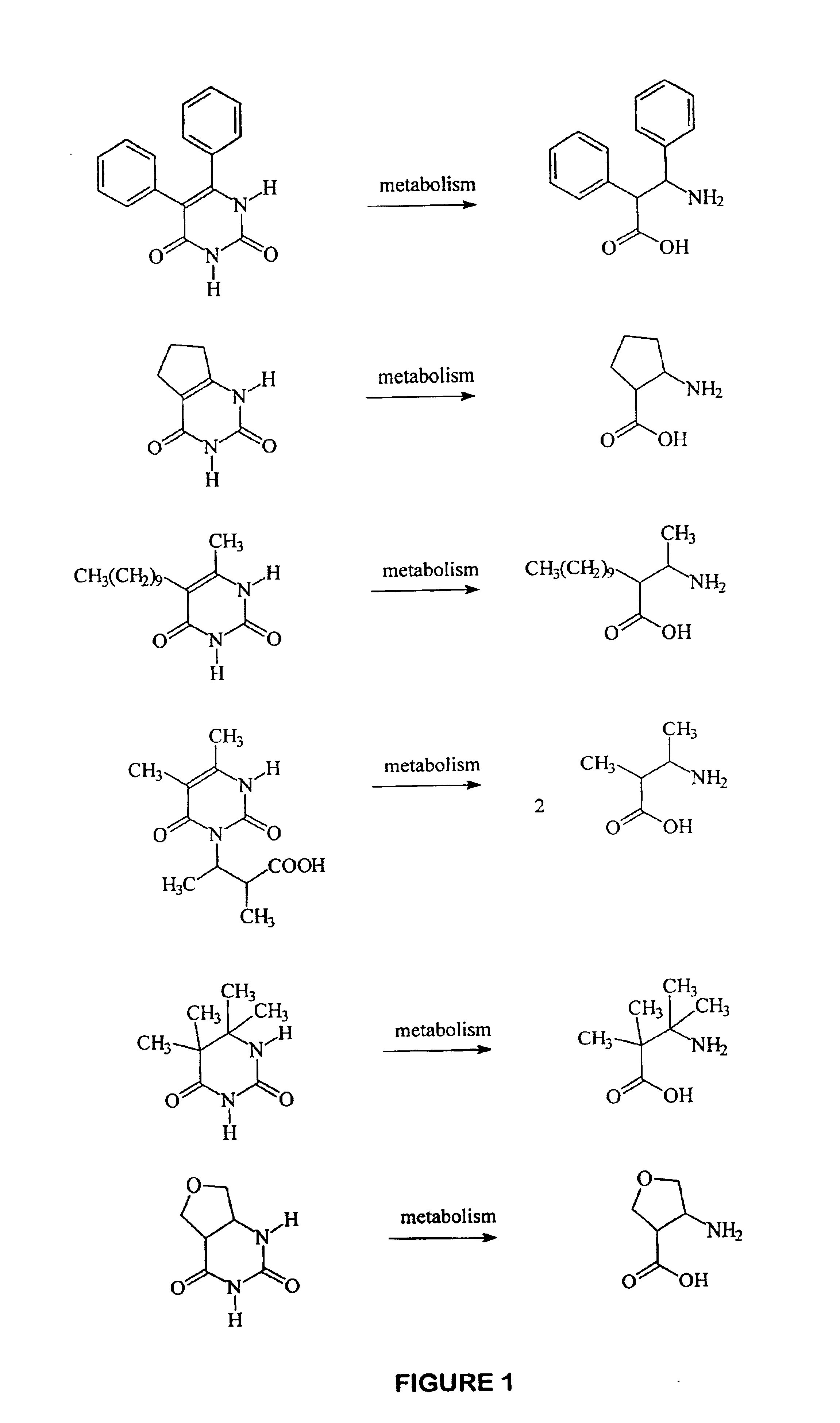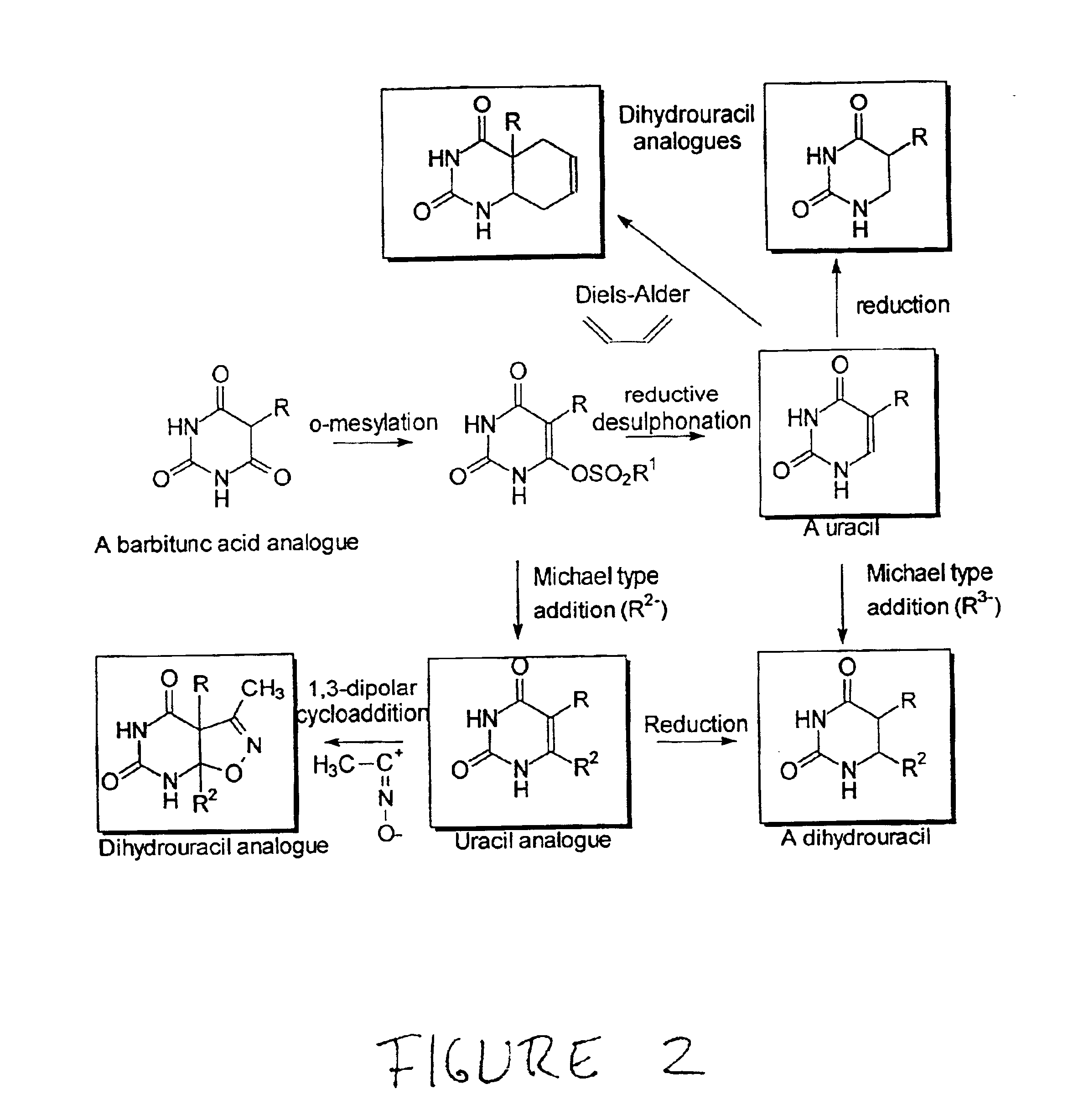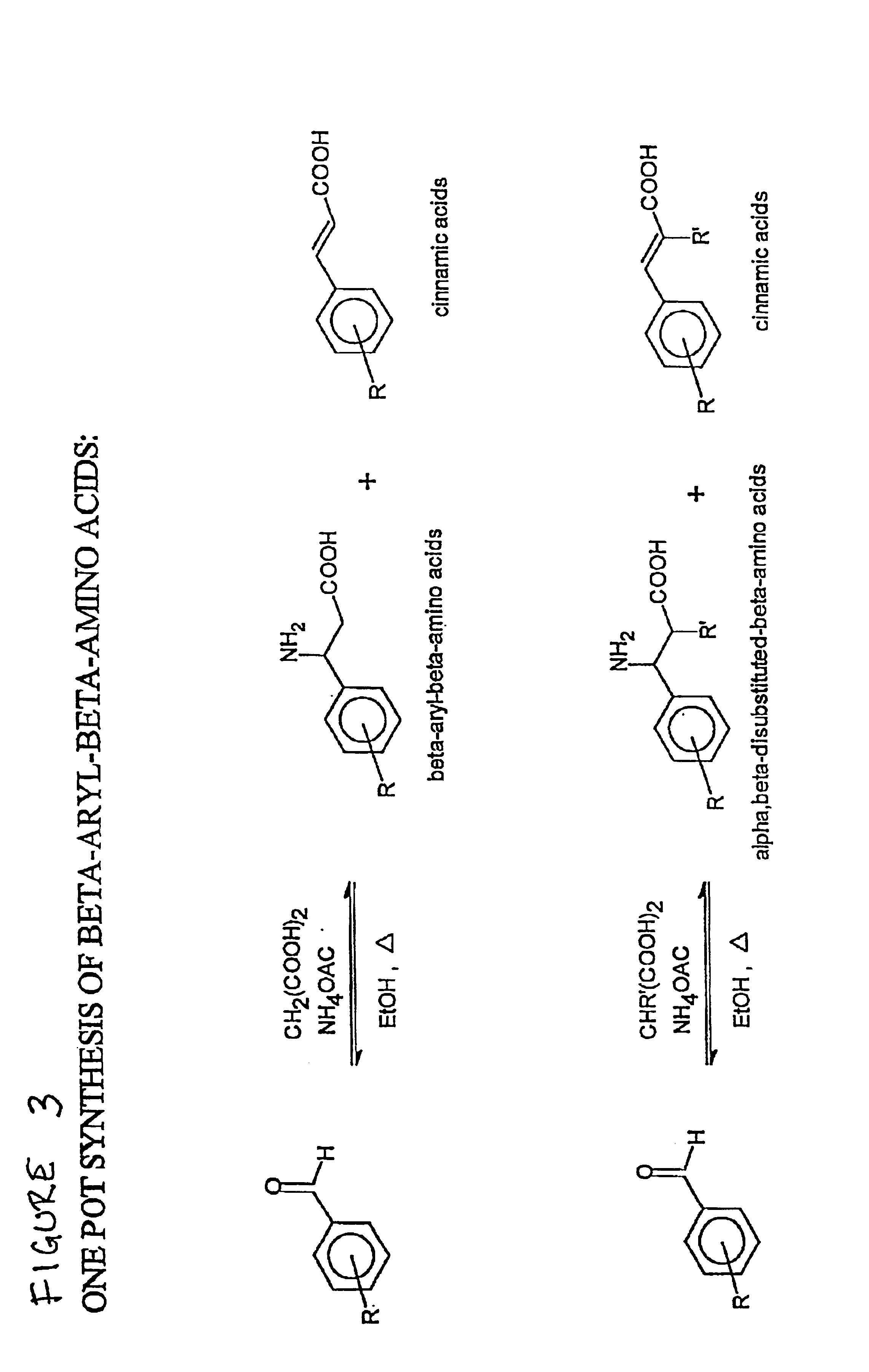Anti-epileptogenic agents
a technology of antiepileptic agents and antiepileptic agents, which is applied in the directions of phosphorous compound active ingredients, applications, peptide/protein ingredients, etc., can solve the problems of no generally accepted drugs for the treatment of pathological changes and high cost of drugs
- Summary
- Abstract
- Description
- Claims
- Application Information
AI Technical Summary
Benefits of technology
Problems solved by technology
Method used
Image
Examples
example 1
Synthesis of β-amino Acids
Method A
General Procedures
N-Acetyl Protection via Acetic Anhydride
[0190]Acetamidothiophenecarboxylic acid alkyl esters were prepared by refluxing the corresponding amino compound with excess Ac2O (4 equiv.) in anhydrous AcOH for 1 hour. The mixture was poured in cold water and the product was isolated by filtration, washed with water and recrystallized from EtOH.
Synthesis of Raney Nickel Catalyst
[0191]A solution of NaOH (320.0 g, 8 mol) in water (1.2 L) was mechanically stirred in a 2.0 L flask. After cooling to 10° C. in an ice-bath, nickel aluminum alloy (250 g) was added in small portions over 90 minutes. The resulting suspension was stirred at room temperature for 1 hour and at 50° C. for an additional 8 hours. The suspension was transferred to a graduated cylinder and the aqueous supernatant was decanted. The resulting slurry was shaken with 2.5M aqueous NaOH solution (200 mL) then decanted. The nickel catalyst was washed 30 times by suspension in wate...
example 2
Synthesis of β-Aryl-β-alanines
[0234]β-Aryl-β-alanines were prepared in a one-pot reaction. In brief, to a solution of a substituted benzaldehyde in absolute ethanol was added malonic acid and excess ammonium acetate, and the reaction mixture was heated to refiux. The reaction mixture was cooled to yield a mixture of the β-aryl-β-alanine and (in certain cases) a cinnamic acid derivative. The cinnamic acid (if present) was removed by acid / base extraction of the mixture to yield the β-aryl-β-alanine often in moderate to good yield. The process is depicted in FIG. 3, and further details of experimental procedures for the synthesis of certain β-aryl-β-alanine compounds are provided infra. A representative purification scheme for purifying the compounds is shown in FIG. 4. Certain compounds prepared as described herein are set forth in Table 1, infra. Yield data are presented in two columns, the second being identical to that in Table 2, infra.
[0235]
TABLE 1β-aryl-β-alanines prepared from ...
example 4
[0252]The “spontaneous recurrent seizures” (SRS) model of epilepsy was used to evaluate candidate compounds in a model for Phase 1 epileptogenesis (see, e.g., Mello, E. et al., Epilepsia (1993) 34:985; Cavalheiro, J. et al., Epilepsia (1991) 32:778). In the SRS model, an adult male Sprague-Dawley rat (c. 260 g) is given pilocarpine by injection (380 mg / kg i.p.). Within 25 minutes, the animal enters status epilepticus, which typically lasts for 15-20 hours (although about 10% of animals die at this stage). The rat is allowed to spontaneously recover and is given food and water ad lib. and maintained on a 12 hour / 12 hour light / dusk cycle. Rats are usually studied in groups of four. Beginning on about day 13-15, the rats develop spontaneous recurrent seizures, which occur at the rate of about 4-5 per week. The rats are videotaped 24 hours per day, and the videotapes are reviewed for behavioral seizures (including head nodding, forelimb clonus, and rearing), which are counted. The anima...
PUM
| Property | Measurement | Unit |
|---|---|---|
| temperature | aaaaa | aaaaa |
| pH | aaaaa | aaaaa |
| pH | aaaaa | aaaaa |
Abstract
Description
Claims
Application Information
 Login to View More
Login to View More - R&D
- Intellectual Property
- Life Sciences
- Materials
- Tech Scout
- Unparalleled Data Quality
- Higher Quality Content
- 60% Fewer Hallucinations
Browse by: Latest US Patents, China's latest patents, Technical Efficacy Thesaurus, Application Domain, Technology Topic, Popular Technical Reports.
© 2025 PatSnap. All rights reserved.Legal|Privacy policy|Modern Slavery Act Transparency Statement|Sitemap|About US| Contact US: help@patsnap.com



